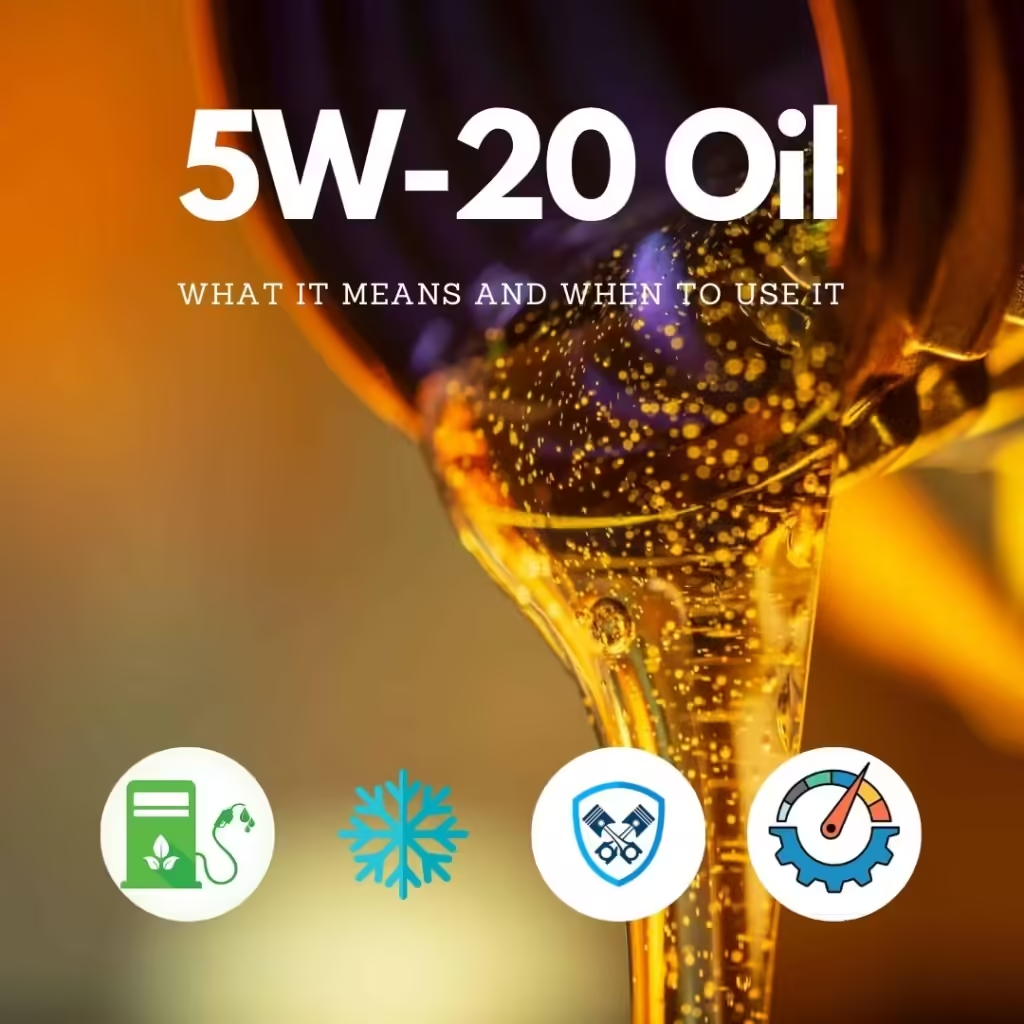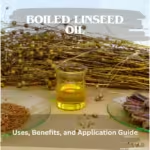5W-20 oil is a popular choice among car owners for its excellent performance in a variety of driving conditions. This multi-viscosity oil is designed to provide optimal lubrication for engines, particularly in colder temperatures, where its lower viscosity allows for easier starts. As vehicles have evolved, manufacturers have increasingly recommended 5W-20 oil due to its ability to improve fuel efficiency and reduce engine wear. Car owners often wonder which engine oil is best suited for their vehicles and what characteristics define high-quality oil. Fortunately, you don’t need to be a chemist to answer this question; a basic understanding of the different types of engine oil, like 5W-20, is all you need.
What is Engine Oil
Historically, friction could lead to beneficial outcomes, such as creating fire, but advancements in automotive technology have shown that friction between engine components can cause damage. The intricate assembly of engine parts operates in close proximity, generating significant friction and heat. Therefore, effective lubrication is essential for maintaining engine health.
All industrial oils are derived from petroleum along with various additives. The process begins with extracting a liquid known as base oil from crude oil at refineries, which is then blended with specific substances to create the final engine oil product.
The primary responsibilities of oil include:
- Cleaning the engine’s internal components.
- Reducing friction between moving parts.
- Preventing the buildup of soot in the engine.
Types of Engine Oils
Mineral Engine Oil is derived from crude oil and is the most affordable and widely available type of engine oil on the market. It is commonly used in many vehicles, especially those that do not require high-performance lubricants. While mineral oil provides adequate protection and lubrication, it may not offer the same level of performance or longevity as synthetic alternatives. This makes it a suitable choice for older vehicles. However, mineral based oils flow through the engine circuit more slowly. This results in increased fuel consumption and impacted vehicle performance.
Synthetic Engine Oil is formulated from chemical compounds, such as hydrocarbon polymers, and does not involve crude oil in its production. This type of oil comes with several advantages over mineral engine oil, including superior oxidation resistance, enhanced thermal stability, and reduced toxicity. These properties make synthetic oils particularly effective in extreme temperatures and demanding driving conditions. If you’re aiming to improve fuel efficiency, synthetic engine oils can be an excellent option. However, it’s important to note that synthetic oils tend to be more expensive than their mineral counterparts and may not be compatible with older vehicles due to their different chemical compositions.
Semi-Synthetic Engine Oil is a blend of mineral and synthetic oils, combining the benefits of both types. While it does not match the performance and durability of fully synthetic oil, it offers better quality and protection than standard mineral oil at a more affordable price. This makes semi-synthetic oil a popular choice for those seeking improved performance without the higher cost associated with full synthetic oils. It strikes a balance between price and performance, making it suitable for a wide range of vehicles, especially those that experience moderate driving conditions.
What do the viscosity numbers mean?

The viscosity of an oil refers to its resistance to flow. It is indicated by two numbers on the oil label. The first number, which ends with the letter ‘W’ (for Winter), reflects how the oil performs in cold conditions, it is measured at -10 to -35 ºC (14 to -31 ºF) such as during engine start-up. The second number indicates the oil’s flow characteristics at normal engine operating temperatures, it is tested at 100 ºC (212 ºF).
In general, a lower number signifies better flow. For example, a 5W-30 oil will flow more easily than a 10W-30 at start-up temperatures, and a 10W-30 will flow better than a 10W-40 at typical operating temperatures. This distinction is crucial because engine oils tend to thicken when cooled and thin out when heated. Low-viscosity oils, which are thinner, flow more freely to protect engine components in cold conditions. In contrast, high-viscosity oils are thicker and are often more effective at maintaining film strength to safeguard the engine at elevated temperatures.
What Does 5W-20 Mean?
The “5W-20” label on engine oil represents its viscosity rating. Here, “5W” stands for “Winter,” indicating the oil’s viscosity in colder temperatures, allowing it to flow easily in the winter. The “20” means it maintains a stable thickness even in hotter temperatures, making it suitable for year-round use in various climates.
Benefits of Using 5W-20 Oil
Utilizing 5W-20 oil can significantly enhance engine performance in several important ways:
Improved Fuel Efficiency: One of the primary benefits of 5W-20 oil is its lower viscosity, which minimizes engine drag. This reduced resistance allows the engine to operate more efficiently, ultimately optimizing fuel economy. As a result, drivers can enjoy longer distances per gallon (km/liter) of fuel, making it a cost-effective choice for those looking to save on fuel expenses.
Better Cold-Start Performance: 5W-20 oil performs excellent in cold weather conditions due to its ability to flow easily at lower temperatures. This characteristic is particularly beneficial during cold starts, as it ensures that the oil circulates quickly and effectively throughout the engine. By reducing the strain on engine components during startup, this oil helps prevent wear and tear, contributing to overall engine longevity.
Enhanced Engine Protection: Another significant advantage of using 5W-20 oil is its ability to provide enhanced protection for engine components. It forms a stable lubricating layer between moving parts, which significantly reduces friction during operation. This protection not only helps to maintain the integrity of the engine but also extends its lifespan by minimizing the risk of damage caused by excessive wear.
When to Use 5W-20 Oil
5W-20 oil is frequently recommended for vehicles equipped with smaller engines, including sedans and SUVs. Its formulation is especially effective in moderate to cool climates, where its lower viscosity allows for optimal performance and protection. This makes it an ideal choice for daily drivers and those who operate their vehicles in varying weather conditions. However, it is essential to consult your vehicle manufacturer’s specifications before selecting engine oil. Different engines may have unique design characteristics or operational requirements that necessitate the use of other oil viscosities. Factors such as engine type, driving habits, and environmental conditions can all influence the appropriate choice of oil. By adhering to the manufacturer’s recommendations, you can ensure that your engine receives the best possible care and performance.
5W-20 Oil vs. Other Viscosities
Understanding the differences between 5W-20 and other oil types can help clarify when to use each one for your vehicle’s needs:
5W-20 vs. 5W-30
5W-30 oil is thicker at high temperatures compared to 5W-20, which means it can provide additional protection for engine components in hotter climates. While this increased viscosity can be beneficial in reducing wear and tear during extreme heat, it may come at the cost of fuel efficiency. In scenarios where maximum engine protection is essential, such as in high-temperature environments or during heavy towing, 5W-30 might be the better choice.
5W-20 vs. 10W-30
10W-30 oil, on the other hand, is less fluid in cold weather conditions. Its higher viscosity at lower temperatures can make it less suitable for areas that experience cold starts. This oil suits warmer regions where low temperatures are rare, enabling effective performance without relying on the lower viscosity benefits of 5W-20.
Common Myths About 5W-20 Oil
Let’s debunk some myths surrounding 5W-20 oil:
- Myth: “Thicker oil is always better.” For many engines, thinner oil like 5W-20 reduces drag and boosts fuel efficiency.
- Myth: “5W-20 is only for winter.” While “W” stands for “Winter,” 5W-20 can be used year-round in various climates.
- Myth: “5W-20 is Only for Small Engines” 5W-20 oil suits some larger engines too, benefiting modern vehicles, trucks, and high-performance cars.
- Myth: “Thinner Oils Provide Less Protection” Many think 5W-20 oil lacks protection, but it’s designed to provide adequate lubrication for specified engines.
- Myth: “Switching to 5W-20 Will Harm My Engine” Switching to 5W-20 is safe if your engine is designed for it; always check your owner’s manual first.
These clarifications show that 5W-20 oil is versatile and appropriate for many vehicles.
Conclusion
5W-20 oil is essential for specific engines, providing improved fuel efficiency and performance in various temperatures. Remember to follow your car manufacturer’s recommendations for the best results, and keep up with regular oil changes to maintain engine health.
FAQ
- What does “5W-20” stand for?
The “5W” indicates winter viscosity, and “20” represents its thickness at higher temperatures. - Can I use 5W-20 oil year-round?
Yes, it is designed for year-round use, particularly in moderate climates. - Is 5W-20 better than 5W-30?
It depends on your engine’s needs. 5W-20 is lighter and may improve fuel efficiency, while 5W-30 provides more protection. - Which cars use 5W-20 oil?
Many sedans and SUVs with smaller engines use 5W-20 oil. Check your car’s manual. - Does 5W-20 oil improve fuel economy?
Yes, its low viscosity reduces engine drag, which can improve fuel economy. - Can I switch from 5W-30 to 5W-20?
Consult your vehicle manual or mechanic before switching oils. - Is 5W-20 safe in hot climates?
It’s typically fine for moderate climates; in very hot areas, you may consider 5W-30. - How often should I change my 5W-20 oil?
Follow your car’s recommended interval, usually every 5,000-7,500 miles (8,000-12,000 kms) - Will 5W-20 prevent cold-start issues?
Yes, it flows easily in cold weather, helping with smoother cold starts. - Where should I dispose of used oil?
Take it to a certified recycling center.
Thank you for reading, for more interesting articles visit our homepage.



